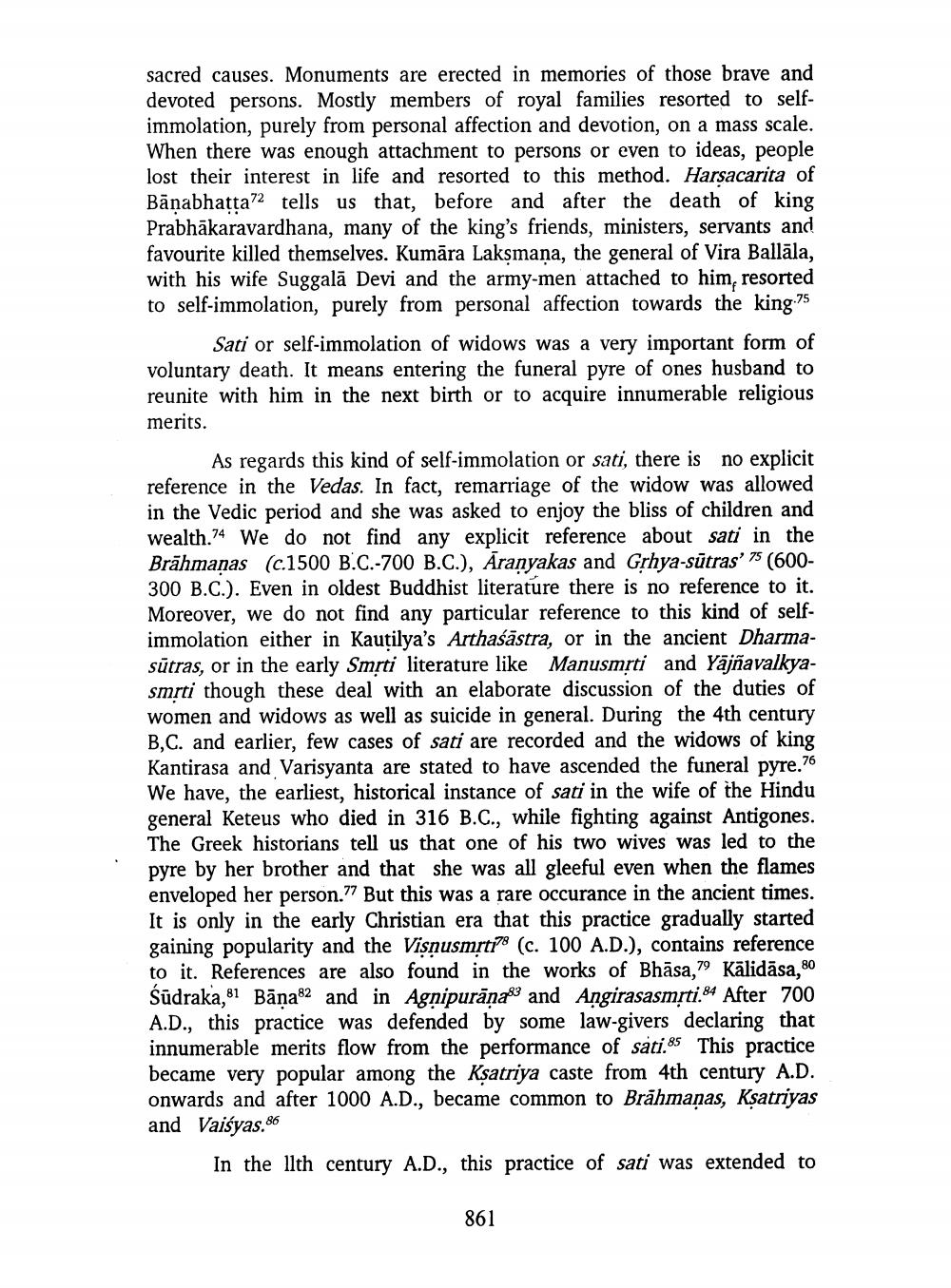________________
sacred causes. Monuments are erected in memories of those brave and devoted persons. Mostly members of royal families resorted to selfimmolation, purely from personal affection and devotion, on a mass scale. When there was enough attachment to persons or even to ideas, people lost their interest in life and resorted to this method. Harṣacarita of Bāṇabhatta tells us that, before and after the death of king Prabhakaravardhana, many of the king's friends, ministers, servants and favourite killed themselves. Kumāra Lakṣmaṇa, the general of Vira Ballāla, with his wife Suggala Devi and the army-men attached to him, resorted to self-immolation, purely from personal affection towards the king."5
Sati or self-immolation of widows was a very important form of voluntary death. It means entering the funeral pyre of ones husband to reunite with him in the next birth or to acquire innumerable religious
merits.
As regards this kind of self-immolation or sati, there is no explicit reference in the Vedas. In fact, remarriage of the widow was allowed in the Vedic period and she was asked to enjoy the bliss of children and wealth. We do not find any explicit reference about sati in the Brahmanas (c.1500 B.C.-700 B.C.), Aranyakas and Grhya-sutras'" (600300 B.C.). Even in oldest Buddhist literature there is no reference to it. Moreover, we do not find any particular reference to this kind of selfimmolation either in Kautilya's Arthasästra, or in the ancient Dharmasūtras, or in the early Smrti literature like Manusmrti and Yajnavalkyasmrti though these deal with an elaborate discussion of the duties of women and widows as well as suicide in general. During the 4th century B,C. and earlier, few cases of sati are recorded and the widows of king. Kantirasa and Varisyanta are stated to have ascended the funeral pyre.76 We have, the earliest, historical instance of sati in the wife of the Hindu general Keteus who died in 316 B.C., while fighting against Antigones. The Greek historians tell us that one of his two wives was led to the pyre by her brother and that she was all gleeful even when the flames enveloped her person." But this was a rare occurance in the ancient times. It is only in the early Christian era that this practice gradually started gaining popularity and the Visnusmrt (c. 100 A.D.), contains reference to it. References are also found in the works of Bhasa, Kālidāsa, Śūdraka, Bāņa and in Agnipurana and Angirasasmrti. After 700 A.D., this practice was defended by some law-givers declaring that innumerable merits flow from the performance of sati. This practice became very popular among the Ksatriya caste from 4th century A.D. onwards and after 1000 A.D., became common to Brahmanas, Ksatriyas and Vaidyas.
81
In the 11th century A.D., this practice of sati was extended to
861




